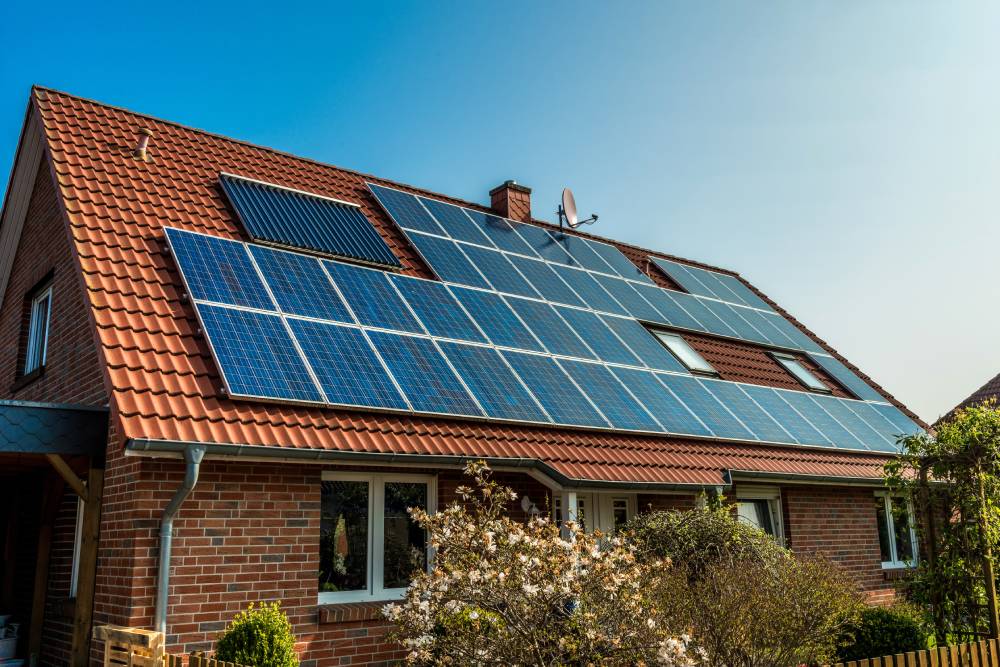If you’re considering installing a solar power system, you’re probably wondering how much electricity your system will create. It’s a valid question. There are several variables including the size of the installation, how much sunlight it receives, the weather, the material the panel is made of and so on. Here’s a look at answers to these questions.
Terminology
There are some terms you should know when discussing the output of your solar energy system. They relate to power output, how much power you use, and the type of electricity created by your system.
- Kilowatt (kW) – This is a measure of electricity that equals 1000 watts. It’s a standard measure of electrical output. The output of your solar system can be measured in terms of watts or kilowatts.
- Kilowatt Hour (kWh) – It’s a measure of how many kilowatts you use in an hour. It’s the standard method of billing for electricity. If you look at your utility bill, you’ll see an item that lists how many Kilowatt Hours of electricity you used that month. For the scientifically inclined, a Kilowatt Hour is equivalent to 3.6 megajoules (a Joule is a unit of work or energy in the International System of Units).
- Direct Current (DC) – The type of electricity initially generated by your solar energy system.
- Alternating Current (AC) – The type of electricity that your home uses for appliances, heat, and so on. The Direct Current (DC) generated by your solar panels is converted to AC so you can use it in your home.
Solar Panels
The photovoltaic panels that make up a typical solar array. The usual size for a residential solar panel is 65 by 39 inches (approx. 5´ 5 high by 3 3 wide). The solar cells are arranged in 10 columns of six cells each. These cells generate the power and are connected by wires and the entire panel is connected to a junction box which connects it to the rest of the array.
Companies make larger panels with 72 cells which are 6 6 long and 3 3 wide. These are normally used in commercial and industrial solar systems but are becoming more popular for home system installations.

What Are Solar Panels Made Of?
Solar panels are made from silicon, glass and metal. Silicon is the material that generates the electric current, glass protects the silicon from the weather and metal frames support the panel.
There are two types of solar panels: monocrystalline and polycrystalline. Monocrystalline solar cells are cut from a solid piece of silicon. Polycrystalline solar cells are made by melting silicon molecules and then bonding them to the panel.
Here are the basic differences between them:
Monocrystalline |
Polycrystalline |
|---|---|
|
|
How Much Energy Does a Solar Panel Generate?
The actual amount of energy a solar panel generates depends on how much sunlight it receives each day. Even the best solar panels are subject to the vagaries of the weather, latitude, and so on.
Here’s an example of possible energy output of a solar panel in California.
- 5 hours of direct sunlight per day
- 5 hours x 290 watts (sample wattage of a premium solar panel) = 1,450 watts-hours (approx. 1.5 kilowatt hours (kWh))
- Your output over one year would be 500 – 550 kWh per year
Solar panels are all rated by the amount of Direct Current (DC) power the produce under standard conditions. Solar panel output is measured in Watts (W) and represent the theoretical output under ideal temperature and sunlight conditions. Most home solar panels sold today have output ratings of between 250 – 400 watts, with the higher ratings being preferable. Solar systems are usually priced in dollars per watt ($/W) and the total wattage of your solar system plays a big part in the overall price.
Why Does Wattage Matter and How to Calculate Panel Wattage?
Power output is an important measurement for your commercial or home solar energy system. The price you pay when you install a system is based on the total power output of your system (expressed in watts or kilowatts).
Wattage is calculated by multiplying Volts x Amps (volts represents the amount of force of the electricity and amperes (amps) is the aggregate amount of energy used. The savings you get from your system is the result of the energy it generates over time, expressed as kilowatts.
So, What’s Next?
What’s next? What should you do, if you’re considering a solar energy system for your home or business? Contact Royal Solar and schedule a consultation visit. We’ll visit your home, determine the area available to install a system, the available sunlight, any shade concerns, and so on. We’ll also discuss your energy needs and determine how large a system you’ll need and give you all the details for your new home solar system.

